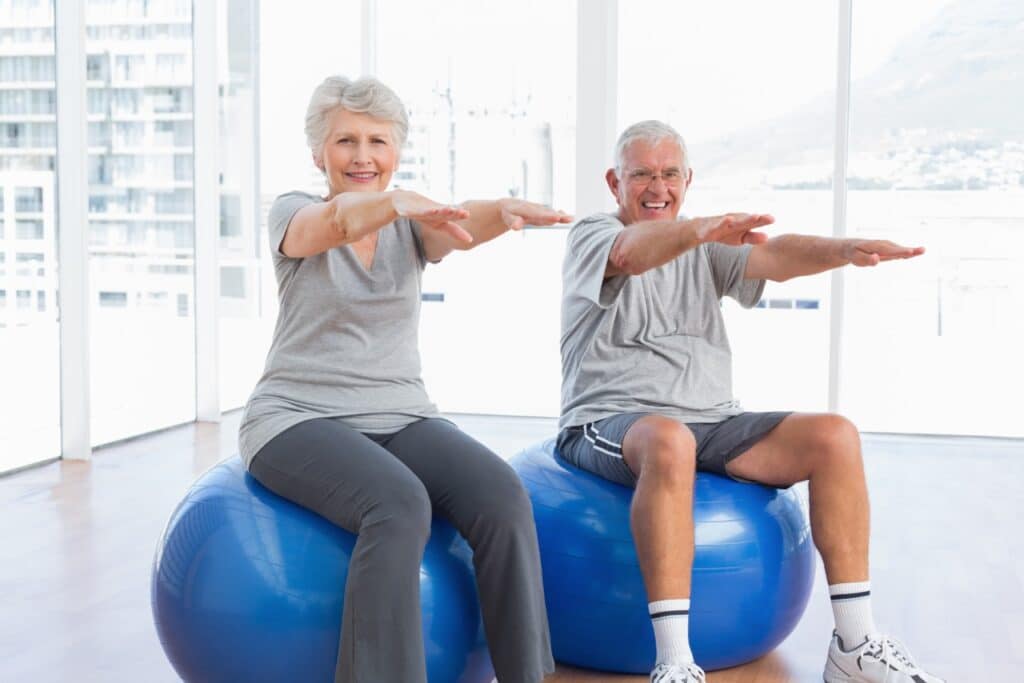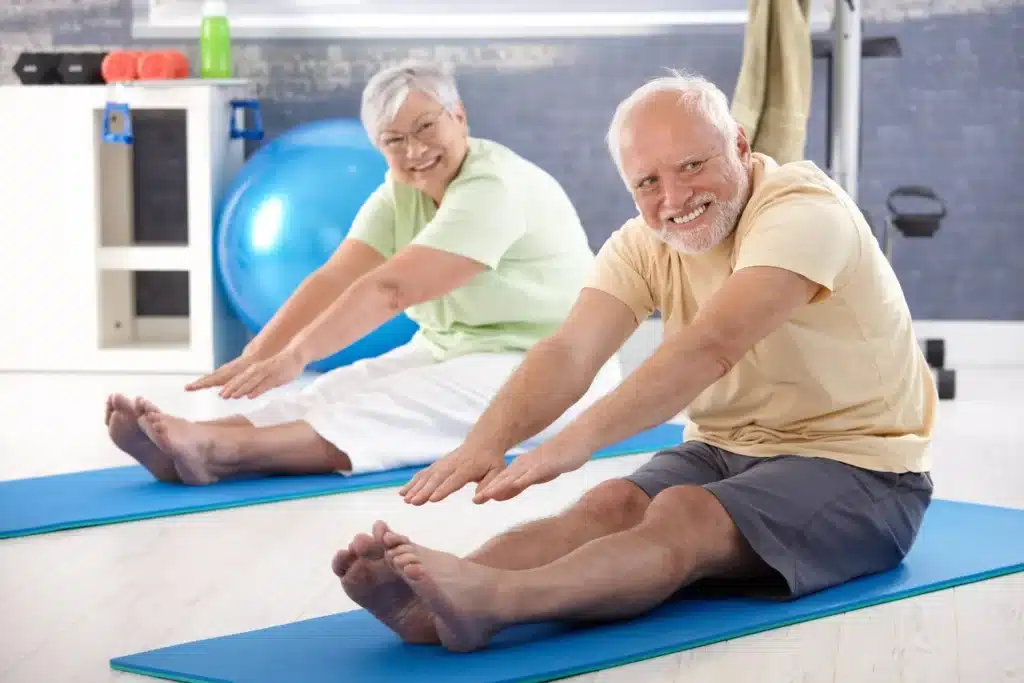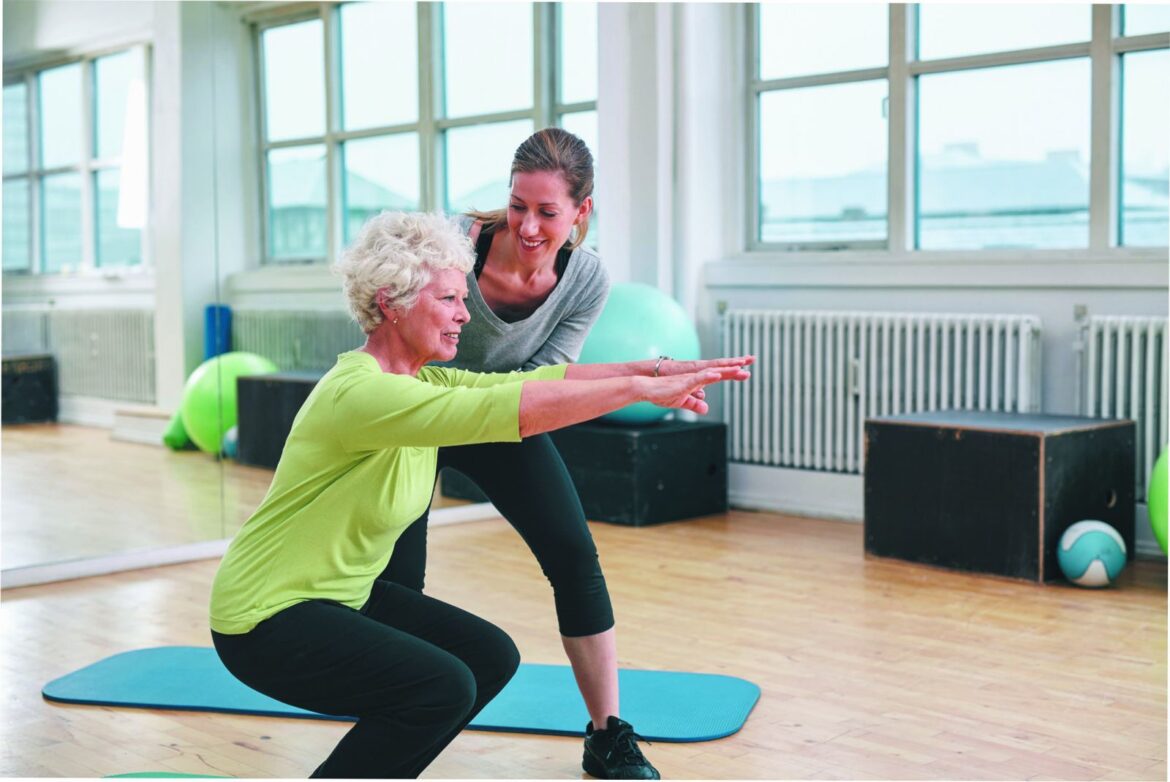Introduction
Is Pilates Good For Arthritis: Arthritis is a widespread and often debilitating condition that affects millions of people worldwide. Characterized by joint inflammation, stiffness, and pain, it can significantly impact one’s quality of life. While there is no cure for arthritis, various forms of exercise and physical therapy have been explored as effective means of managing its symptoms and improving overall joint health. Among these options, Pilates has gained recognition as a valuable approach to enhancing the well-being of individuals living with arthritis. In this discussion, we will explore the potential benefits of Pilates for arthritis sufferers, examining how this low-impact exercise method may help alleviate pain, improve flexibility, and promote a more active and comfortable lifestyle for those with arthritis.
Pilates routines can be customized to meet the individual needs and limitations of arthritis patients. Whether someone has osteoarthritis, rheumatoid arthritis, or another form of the condition, a skilled Pilates instructor can adapt exercises to accommodate their unique circumstances, ensuring a safe and effective workout. Pilates places a strong emphasis on the mind-body connection. By practicing mindfulness and focusing on movement precision, individuals with arthritis can enhance their coordination and balance. This can be especially valuable for those dealing with joint pain, as improved balance can reduce the risk of falls and injury.
While Pilates can offer numerous benefits for arthritis management, it’s essential for individuals with arthritis to consult with their healthcare provider and work with a qualified Pilates instructor who has experience working with arthritis patients. A tailored and gradual approach to Pilates can help individuals with arthritis reap its rewards while minimizing the risk of overexertion or injury. Ultimately, Pilates can be a valuable addition to a comprehensive arthritis management plan, promoting better joint health, mobility, and overall well-being.

Is it OK to do Pilates with arthritis?
For these reasons, Pilates is a good choice for people with arthritis. Pilates emphasizes core stability, which helps with balance, as well as spinal flexibility, which helps you perform the activities of daily life, from driving to reaching objects on high shelves.
The Benefits of Pilates for Arthritis
Improved Flexibility and Mobility: Pilates focuses on stretching and strengthening muscles, which can help improve joint flexibility and overall mobility. This is particularly beneficial for individuals with arthritis, as it can help counteract the stiffness often associated with the condition.
Strengthening Muscles: Pilates is known for its emphasis on core strength, which can help support and stabilize arthritic joints. Stronger muscles can also reduce the load placed on the affected joints, potentially alleviating pain and discomfort.
Enhanced Posture and Alignment: Proper body alignment is a key component of Pilates. Improved posture and alignment can help individuals with arthritis reduce strain on their joints and improve their overall comfort.
Low-Impact Exercise: Many Pilates exercises are low-impact, meaning they are gentle on the joints. This makes Pilates a suitable option for individuals with arthritis who want to engage in physical activity without exacerbating their symptoms.
Mind-Body Connection: Pilates encourages mindfulness and body awareness, which can help individuals with arthritis better understand their bodies and manage their pain effectively.
Which is better for arthritis Pilates or yoga?
Which is Better for Arthritis Yoga or Pilates? Both yoga and Pilates can help arthritis. Yoga helps strengthen and improve the flexibility of the muscles around the joints, and Pilates strengthens the bones and joints. If not used to practicing either Pilates or yoga, look for slow, beginner classes to start with.
Pilates for Arthritis
Strength and Stability: Pilates places a strong emphasis on strengthening the core muscles, which can provide better stability and support for arthritic joints. Strong muscles can help alleviate the strain on affected joints.
Low Impact: Many Pilates exercises are low-impact, making them gentle on the joints. This is especially beneficial for individuals with arthritis who may need to avoid high-impact activities that can exacerbate joint pain.
Flexibility: Pilates incorporates stretching exercises that can improve joint flexibility, reducing stiffness commonly associated with arthritis.
Controlled Movements: Pilates exercises are typically performed with controlled, precise movements, which can help individuals with arthritis maintain joint integrity and prevent further damage.
Adaptability: A skilled Pilates instructor can tailor exercises to an individual’s specific needs and limitations, making it accessible for people with varying degrees of arthritis severity.
What is the best exercise for arthritis?
Health Care Providers: Improving Your Arthritis Patients’ Health. Counsel for low-impact physical activities—Walking, biking, swimming, and water activities are all good non-drug ways to ease arthritis pain and are safe for most adults. These forms of exercise can also improve joint function and improve mood.
Low-Impact Aerobic Exercises
Swimming and Water Aerobics: The buoyancy of water reduces the impact on joints while providing resistance for a full-body workout.
Cycling: Stationary or outdoor cycling is an excellent low-impact option that strengthens leg muscles and promotes joint mobility.
Elliptical Trainer: This machine provides a low-impact cardio workout that engages both upper and lower body muscles.
Walking: A simple yet effective exercise, walking helps maintain joint mobility and overall fitness. Walking on softer surfaces, like grass or a treadmill, is gentler on the joints.
Strength Training
Bodyweight Exercises: Moves like squats, lunges, and modified push-ups can be adapted to individual fitness levels and joint comfort.
Resistance Bands: These bands offer resistance in various levels and can be used for strengthening different muscle groups.
Free Weights: Using light dumbbells or weight machines under the guidance of a fitness professional can help target specific muscle groups.
Which yoga is good for arthritis?
Because it allows the use of aids, Iyengar yoga, in particular, is often recommended for people with arthritis.
Hatha Yoga: Gentle and Beginner-Friendly
Hatha yoga is an excellent choice for individuals with arthritis, especially beginners. It focuses on gentle, slow-paced movements and basic postures, making it accessible to people of all fitness levels. Hatha yoga provides a solid foundation for understanding yoga poses and alignment while emphasizing proper breathing techniques. This practice helps improve joint flexibility, reduce stiffness, and enhance overall body awareness.
Iyengar Yoga: Precision and Alignment
Iyengar yoga places a strong emphasis on precision, alignment, and the use of props like belts, blocks, and bolsters. This style is particularly suitable for individuals with arthritis because it allows for gradual progression into poses while providing support and reducing strain on joints. Iyengar yoga instructors often customize sequences to accommodate the unique needs and limitations of students with arthritis, ensuring a safe and effective practice.
Restorative Yoga: Deep Relaxation and Healing
Restorative yoga is a deeply relaxing practice that involves holding gentle poses for extended periods, typically with the support of props. It is ideal for those with arthritis because it promotes deep relaxation, reduces muscle tension, and enhances joint mobility without placing undue stress on the joints. Restorative yoga can be especially beneficial for managing pain and improving sleep, which are common challenges for arthritis sufferers.
What are 3 exercises for arthritis?
What types of activities should I do? Low-impact aerobic activities do not put stress on the joints and include brisk walking, cycling, swimming, water aerobics, light gardening, group exercise classes, and dancing.
Range-of-Motion Exercises
Neck Tilts: Sit or stand with your back straight. Slowly tilt your head to one side, bringing your ear toward your shoulder. Hold for a few seconds, then return to the upright position. Repeat on the other side. This exercise helps improve neck mobility and reduce tension.
Shoulder Rolls: Sit or stand with your arms relaxed at your sides. Roll your shoulders forward in a circular motion for 10-15 seconds, then reverse the direction. This exercise helps alleviate shoulder stiffness.
Ankle Circles: Sit comfortably with your feet flat on the floor. Lift one foot slightly off the ground and make gentle circular motions with your ankle, first clockwise and then counterclockwise. Repeat with the other ankle. Ankle circles improve flexibility in the ankles and can be especially beneficial for those with arthritis in the lower extremities.
What is the main cause of arthritis?
Most forms of arthritis are thought to be caused by a fault in the immune system that causes the body to attack its own tissues in the joints. This may be inherited genetically. Other forms of arthritis can be caused by problems with the immune system or by a metabolic condition, such as gout.
Genetic Predisposition
Genetics plays a substantial role in the development of arthritis. Certain genetic markers and variations can increase an individual’s susceptibility to the condition. Rheumatoid arthritis (RA), for instance, has a strong genetic component, and people with a family history of RA are at a higher risk of developing the disease. However, genetics alone do not determine whether someone will develop arthritis; environmental factors also come into play.
Autoimmune Dysfunction
Many forms of arthritis, such as rheumatoid arthritis and psoriatic arthritis, are autoimmune diseases. In these conditions, the immune system mistakenly attacks healthy joint tissues, leading to inflammation, pain, and joint damage. The exact triggers for these autoimmune responses are not fully understood but may involve a combination of genetic, environmental, and hormonal factors.
Infections
In some cases, arthritis can develop as a result of an infection. Bacterial, viral, or fungal infections can lead to reactive arthritis or septic arthritis. Reactive arthritis often occurs after a gastrointestinal or genitourinary infection, while septic arthritis is typically caused by a bacterial joint infection.
Joint Injury or Trauma
Joint injuries or trauma, such as fractures or dislocations, can increase the risk of developing osteoarthritis. When a joint is injured, the surrounding cartilage and tissues may be damaged, leading to accelerated wear and tear and the eventual onset of osteoarthritis in that joint.
Is Zumba good for arthritis?
But your rheumatologist may recommend that you try to be more active. If other types of aerobic exercise aren’t appealing, you may want to try a dance-based fitness class like Zumba, a high-energy Latin dance fitness class.
Cardiovascular Fitness: Zumba is an excellent way to improve cardiovascular health. The dynamic dance moves and continuous movement in Zumba classes can help increase heart rate, improve circulation, and enhance overall cardiovascular fitness. A strong cardiovascular system can aid in managing arthritis symptoms and improve overall health.
Weight Management: Maintaining a healthy weight is crucial for individuals with arthritis, as excess weight can put additional stress on joints. Zumba can be an effective tool for weight management and can help individuals achieve and maintain a healthy body weight.
Mood and Mental Health: Zumba’s lively music and social atmosphere can contribute to improved mood and mental well-being. Regular participation in Zumba classes can help reduce stress, boost self-esteem, and provide a sense of community, which can be particularly beneficial for those dealing with the emotional challenges often associated with arthritis.
Muscle Endurance: Zumba involves a variety of dance moves that engage various muscle groups throughout the body. Over time, regular Zumba practice can improve muscle endurance, which is essential for supporting and stabilizing arthritic joints.
Does walking help arthritis?
Walking is recommended for people with arthritis as it’s low impact, helps to keep the joints flexible, helps bone health and reduces the risk of osteoporosis. If you do experience pain or you’re very stiff afterwards try doing a bit less, factor in more rest and check in with your GP, if you need to.
Improved Joint Health: Contrary to popular belief, regular and moderate walking can actually help improve joint health. It promotes the circulation of synovial fluid, which lubricates the joints, reduces stiffness, and enhances joint mobility.
Weight Management: Maintaining a healthy body weight is crucial for individuals with arthritis. Excess weight places additional stress on joints, particularly in the knees, hips, and spine. Walking is an effective way to manage weight, making it easier for arthritic joints to bear less strain.
Muscle Strength and Endurance: Walking engages various muscle groups in the legs, back, and core. Over time, it can help improve muscle strength and endurance, providing better support and stability for arthritic joints.
Low-Impact Activity: Walking is a low-impact exercise, meaning it puts minimal stress on the joints. This makes it a safe and accessible option for individuals with arthritis, even those with joint damage or limited mobility.
Cardiovascular Health: Walking at a brisk pace can elevate your heart rate and improve cardiovascular fitness. A strong cardiovascular system is essential for overall health and can help individuals with arthritis manage fatigue and pain more effectively.

Conclusion
Pilates can indeed be a valuable and effective form of exercise for individuals living with arthritis. Its low-impact nature, emphasis on flexibility, muscle strengthening, and mindfulness make it well-suited to help manage arthritis symptoms and improve overall joint health. Pilates offers a holistic approach, not only addressing physical aspects but also promoting mental well-being and body awareness.
While Pilates can be beneficial, it’s crucial for individuals with arthritis to approach it under the guidance of a qualified instructor who can tailor exercises to their specific needs and limitations. Additionally, consulting with a healthcare provider to ensure that Pilates is a safe addition to one’s arthritis management plan is essential.
When practiced mindfully and consistently, Pilates has the potential to reduce pain, increase joint mobility, enhance muscle strength, and contribute to a better quality of life for those with arthritis. It can empower individuals to take an active role in managing their condition, promoting a more comfortable and active lifestyle despite the challenges of arthritis.

